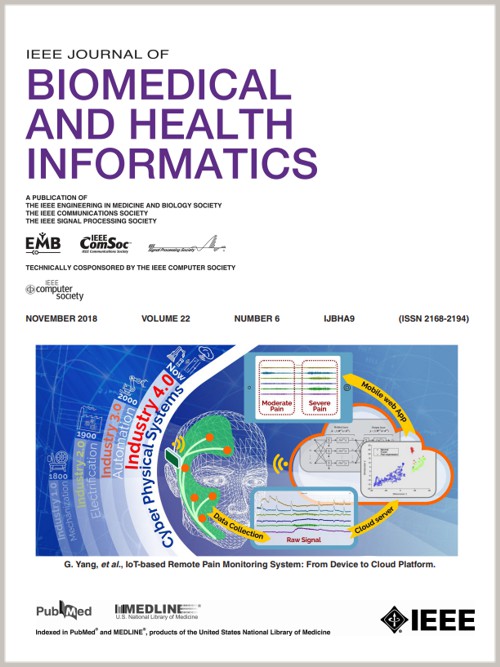用于开放手术缝合技能评估的手部旋转功能数据分析。
IF 6.7
2区 医学
Q1 COMPUTER SCIENCE, INFORMATION SYSTEMS
IEEE Journal of Biomedical and Health Informatics
Pub Date : 2024-11-11
DOI:10.1109/JBHI.2024.3496122
引用次数: 0
摘要
本研究探讨了功能数据分析(FDA)在 SutureCoach 工作台模拟器上径向缝合过程中手滚动速度的应用,以评估开放式缝合性能。通过将时间传感器数据视为数学函数,FDA 提供了手滚动动态变化的整体视图,提供了易于解释且与临床相关的综合评估。对 96 名受试者的手滚动曲线进行了聚类分析,分为高级外科医生、实习外科医生和新手。使用功能 k 均值法,利用动态时间平移对齐曲线,将数据划分为两个预设数目的聚类(3 和 6)。两种聚类模型(3 个聚类和 6 个聚类)都能有效地将成绩聚类为具有不同特征和技能水平的组别(通过目测聚类中心点可以明显看出)。群组成员资格与缝合技能之间的关系可通过技能的替代衡量标准得到证实,这些衡量标准包括:专家全球评分量表评分、临床状态和专业知识以及模拟器衍生指标。这项研究的结果为了解缝合技能的基本要素提供了宝贵的见解,并能提高模拟缝合培训的自主性和效率。我们研究结果的临床意义与外科技能评估领域密切相关,基于 FDA 的方法可用于客观反馈和培训。本文章由计算机程序翻译,如有差异,请以英文原文为准。
Functional Data Analysis of Hand Rotation for Open Surgical Suturing Skill Assessment
This study explores the application of functional data analysis (FDA) to hand roll velocity during radial suturing on the SutureCoach bench simulator for evaluating open suturing performance. By treating temporal sensor data as mathematical functions, FDA provides a holistic view of the dynamic changes in hand roll, offering comprehensive assessments that are easily interpretable and clinically relevant. Cluster analysis was performed on hand roll profiles from 96 subjects, categorized into advanced surgeons, trainee surgeons, and novices. Functional k-means, using dynamic time-warping to align curves, were used to partition the data into two preset numbers of clusters (3 and 6). Both clustering models (3-cluster and 6-cluster) effectively clustered performance into groups with distinct characteristics and levels of skill (evident from visual inspection of cluster centroids). The relationship between cluster membership and suturing skills was corroborated using proxy measures of skill: expert global rating scale ratings, clinical status and expertise, and simulator-derived metrics. The findings of this study offer valuable insight into essential components of suturing skill and can improve the autonomy and efficiency of simulation-based suturing training. The clinical relevance of our results is immediately pertinent to the field of surgical skill assessment, where FDA-based methods could potentially be employed for objective feedback and training.
求助全文
通过发布文献求助,成功后即可免费获取论文全文。
去求助
来源期刊

IEEE Journal of Biomedical and Health Informatics
COMPUTER SCIENCE, INFORMATION SYSTEMS-COMPUTER SCIENCE, INTERDISCIPLINARY APPLICATIONS
CiteScore
13.60
自引率
6.50%
发文量
1151
期刊介绍:
IEEE Journal of Biomedical and Health Informatics publishes original papers presenting recent advances where information and communication technologies intersect with health, healthcare, life sciences, and biomedicine. Topics include acquisition, transmission, storage, retrieval, management, and analysis of biomedical and health information. The journal covers applications of information technologies in healthcare, patient monitoring, preventive care, early disease diagnosis, therapy discovery, and personalized treatment protocols. It explores electronic medical and health records, clinical information systems, decision support systems, medical and biological imaging informatics, wearable systems, body area/sensor networks, and more. Integration-related topics like interoperability, evidence-based medicine, and secure patient data are also addressed.
 求助内容:
求助内容: 应助结果提醒方式:
应助结果提醒方式:


